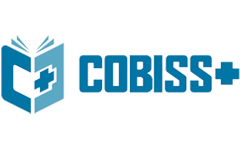The Effect of Food Blogger’s Reviews on Young Adults’ Food Choice Decision in Malaysia
DOI:
https://doi.org/10.61841/1aydb128Keywords:
food blogger, food blogger’s review, perceived usefulness, trustworthiness, reputation, effective marketing strategiesAbstract
A blog (a combination words of web and log) is a web page with regular diary or journal entries that incorporates different postings by authors and responses (Boas, 2011). The first blog was created by Justin Hall through Links.net where he shared about his family background and experience of his summer trip (Chapman, 2011). Blogging has become one of the most well-liked and prominent platforms for sharing contents on personal thought, feelings, opinions, and more. To date bloggers wrote reviews of products and services that they had used and experienced. Food blogger has been growing rapidly and popular among Malaysian. The reliant on technology especially by young adults in utilizing online media to search for information has led to a greater number of food bloggers in Malaysia. There are also concern among marketers as to the impact of food bloggers on blog’s readers. Thus, this research aims to examine the effect of perceived usefulness, trustworthiness and reputation of food blogger on young adults’ food choice decision making in Malaysia. The outcome of this study is also expected to contribute towards effective marketing strategies to marketers of food and beverage industry. In this research, Technology Acceptance Model (TAM) developed by Fred Davis was used to forecast an individual user acceptance of technologies. Overall findings concluded that all188 respondents showed that perceived usefulness, trustworthiness and reputation have strong correlation with teenager’s food choice decision.
Downloads
References
1. AlSaleh, D. (2017). Understanding the Role of Blogger Recommendation on Consumer Purchasing Behaviour,(1), pp.23-40.
2. Astorga, R. (2015). Food Blogs as An Effective Marketing Strategy. [online] prezi.com. Available at: https://prezi.com/zub-jmwv4gjv/food-blogs-as-an-effective-marketing-strategy/ [Accessed 22 Dec. 2018].
3. Agunbiade, D. and Ogunyinka, P. (2013). Effect of Correlation Level on the Use of Auxiliary Variable in Double Sampling for Regression Estimation. Journal of Statistics, 3(3), pp.312-318.
4. Boas, I. (2011). Process Writing and the Internet. English Teaching Forum, pp.26-32.
5. Boyd, D. (2006). A bloggers blog: Exploring the definition of a medium, pp.1-21.
6. Burgess, S., Stephen, L., Carmine, S., Carmen, C., and Jeremy, B. (2009). “User Generated Content (UGC) in Tourism: Benefits and Concerns of Online Consumers.” In Information systems in a globalizing world: challenges, ethics and practices: Proceedings of the 17th European Conference on Information Systems, ed. S.
Newell, E. Whitley, N. Pouloudi, J. Wareham and L. Mathiassen, Verona, Italy, June 8-10.
7. Casaló, L. (2011). Understanding the intention to follow the advice obtained in an online travel community. Computers in Human Behavior, 27(2), pp.pp.622-633.
8. Chaovalit, P. (2017). Actors Influencing Cosmetics Purchase Intention In Thailand: A Study On The Relationship Of Credibility and Reputation With The Persuasive Capabilities Of Beauty Bloggers. 2(1), pp.15-39.
9. Chapman, C. (2011). A Brief History of Blogging | Webdesigner Depot. [online] Webdesigner Depot. Available at: https://www.webdesignerdepot.com/2011/03/a-brief-history-of-blogging/ [Accessed 22 Dec. 2018].
10. Cheng, R. and Fang, W. (2015). Blog Intention Based on Fashion Involvement and Trust. International Journal of Electronic Commerce Studies, 6(1), pp.19-36.
11. Davis FD, Bagozzi RP, Warshaw PR (1992). Extrinsic and intrinsic motivation to use computers in the workplace. J. Appl. Soc. Psychol. 22(14): 1109-1130.
12. Department of Statistics Malaysia (2018). Current Population Estimates, Malaysia, 2017-2018.
13. Doney, M. and Cannon, P. (1997). “An Examination of the Nature of Trust in Buyer-Seller Relationships.” Journal of Marketing, 61(2):35-51.
14. Erkan, I., and Evans, C. (2016). The influence of eWOM in social media on consumers’ purchase intentions: An extended approach to information adoption. Computers in Human Behavior, 61(8), 47-55.
15. Filieri, R., Alguezaui, S., &Mcleay, F. (2015). Why do travelers trust TripAdvisor? Antecedents of trust towards consumer-generated media and its influence on recommendation adoption and word of mouth. Tourism Management, 51(December), 174-185.
16. Fombrun, C.J. (1996) Reputation: Realizing Value from the Corporate Image. Boston, MA: Harvard Business School Press. DOI: 10.37200/IJPR/V24I2/PR200398
17. Gefen, D. (2002). “Reflections on the Dimensions of Trust and Trustworthiness Among Online Consumers.”
ACM SIGMIS Database, 33(3): 38-53.
18. Glen, S. (2014). Cronbach's Alpha: Simple Definition, Use and Interpretation. [online] Statistics How To.
Available at: https://www.statisticshowto.datasciencecentral.com/cronbachs-alpha-spss/ [Accessed 3 May
2019].
19. Google Trends. (2018). Explore what the world is searching. [online] Available at:
https://trends.google.com/trends/?geo=MY [Accessed 1 Jan. 2019].
20. Gogtay, N. and Thatte, U. (2017). Principles of Correlation Analysis. Journal of The Association of Physicians
of India, 65, p.78.
21. Hanifati, A. (2015). The Impact of Food Blogger toward Consumer’s Attitude and Behavior in Choosing
Restaurant. International Journal of Humanities and Management Sciences (IJHMS), 3(3), pp.149-153.
22. Hsiao, K., Judy, L., Xiang-Ying, W., Hsi-Peng, L., and Hueiju, Y.(2010). “Antecedents and Consequences of
Trust in Online Product Recommendations: An Empirical Study in Social Shopping.” Online Information
Review, 34(6): 935-53.
23. Hsu, C., Lin, J.C. & Chiang, H. (2013). The effects of blogger recommendations on customers’ online shopping
intentions. Internet Research, Vol. 23(Issue: 1), pp.69-88.
24. Hung, K. and Li, S. (2007). “The Influence of eWOM on Virtual Consumer Communities: Social Capital, Consumer Learning, and Behavioral Outcomes.” Journal of Advertising Research, 47(4): 485-95.
25. Ing, P. and Ming, T. (2018). Antecedents of Consumer Attitude towards Blogger Recommendations and its Impact on Purchase Intention. Asian Journal of Business and Accounting, 11(1), pp.313-316.
26. Jahangir, N. and Begum, N. (2008). The role of perceived usefulness, perceived ease of use, security and privacy, and customer attitude to engender customer adaptation in the context of electronic banking. African Journal of Business Management, 2(1), pp.032-040.
27. Kent, M. (2008). Critical analysis of blogging in public relations. Public Relations Review, 34 (1), 32-40.
28. Lai, P. (2017). The Literature Review of Technology Adoption Models and Theories for The Novelty Technology. Journal of Information Systems and Technology Management, 14(1).
29. Landers, L. (2017). Food and Beverage Marketing Reshaped by Influencers. [online] Girlpower Marketing. Available at: https://girlpowermarketing.com/food-beverage-marketing [Accessed 10 Dec. 2018].
30. Leng, G. (2016). The determinants of food choice. Proceedings of the Nutrition Society, 1(1), pp.1-18.
31. Lim, K., Choon, S., Matthew, L., and Izak, B. (2006). “Do I Trust You Online, and If So, Will I Buy? An Empirical Study of Two Trust-Building Strategies.” Journal of Management Information Systems, 23(2): 233-66.
32. Lofgren, J. (2013). Changing Tastes in Food Media: A study of recipe sharing traditions in the food blogger community.
33. McLeod, S. (2018). Questionnaire | Simply Psychology. [online] Simplypsychology.org. Available at: https://www.simplypsychology.org/questionnaires.html [Accessed 3 Dec. 2018].
34. McKnight, H., Vivek, C., and Charles, K. (2002). “Developing and Validating Trust Measures for e-Commerce: An Integrative Typology.” Information Systems Research, 13(3): 334-59.
35. Mitchell, A., Gottfried, J., Barthel, M. and Shearer, E. (2016). The Modern News Consumer. Pew Research Center, pp.21-23.
36. Mohd-Any, A., Mahdzan, N. and Siang Cher, C. (2014). Food choice motives of different ethnics and the foodies segment in Kuala Lumpur. British Food Journal, Vol. 116(Iss 12), pp.pp. 1879 - 1896.
37. Nathalia, T., Kansius, C., Felicia, E. and Kalpikasari, I. (2017). The Influence of Food Blogger to the Intention of Consuming Healthy Food. Advances in Economics, Business and Management Research, 28(1), pp.157-158.
38. Parkin, R. (2012). Social media: Food - UK - July 2012. Mintel Oxygen Reports, pp.12-20.
39. Phang, G. and Ming, T. (2018). Antecedents of Consumer Attitude Towards Bloggers Recommendation and its Impact on Puchase Intention, 11(1).
40. Pqi.stats.gov.my. (2018). Population Quick Info. [online] Available at: http://pqi.stats.gov.my/result.php?token=98fb983e1f60512e173fddd66bf762e1 [Accessed 26 Dec. 2018].
41. Rainie, L. (2011). Where people get information about restaurants and other local businesses. Pew Research Center, pp.4-7.
42. Rubin, V. and Liddy, E. (2019). Assessing Credibility of Weblogs. 12(2), pp.2-18.
43. Surbhi, S. (2016). Difference Between Primary and Secondary Data (With Comparison Chart) - Key Differences. [online] Key Differences. Available at: https://keydifferences.com/difference-between-primaryand-secondary-data.html [Accessed 13 Dec. 2018]
44. Saunders, M., Lewis, P., and Thornhill, A. (2009). Research Methods for Business Students. 5th ed. s.l.:Pearson
Education.
45. Saunders, M., Lewis, P. and Thornhill, A. (2012). Research Methods for Business Students. 6th ed. s.l.:Pearson
Education.
46. Saunders, M., Lewis, P. and Thornhill, A. (2015). Research Methods for Business Students. 7th ed. s.l.:Pearson
Education.
47. Shamdasani, P., Andrea, S., and Juliana, T. (2001). “Location, Location, Location: Insights for Advertising
Placement on the Web.” Journal of Advertising Research, 41(4): 7-21
48. Surendran, P. (2013). Technology Acceptance Model: A Survey of Literature. International Journal of Business
and Social Research (IJBSR), 2(4), pp.pp.175-176.
49. The American Heritage Dictionary. (2019). The American Heritage Dictionary of the English Language.
[online] Available at: https://ahdictionary.com/word/search.html?q=reputation [Accessed 16 Dec. 2018].
50. Thompson, K. (2015). Positivism and Interpretivism in Social Research. [online] ReviseSociology. Available
at: https://revisesociology.com/2015/05/18/positivism-interpretivism-sociology/ [Accessed 16 Dec. 2018].
51. Vabe, M. and Hansen, H. (2014). The Relationship between Food Preferences and Food Choice: A Theoretical
Discussion. International Journal of Business and Social Science, 5(7), pp.145-150.
52. Waddington, S. (2012). Tools and tips for working with bloggers. [online] wadds.co.uk. Available at:
https://wadds.co.uk/2012/12/02/tools-and-tips-for-working-with-bloggers/ [Accessed 16 Dec. 2018]
Downloads
Published
Issue
Section
License
Copyright (c) 2020 AUTHOR

This work is licensed under a Creative Commons Attribution 4.0 International License.
You are free to:
- Share — copy and redistribute the material in any medium or format for any purpose, even commercially.
- Adapt — remix, transform, and build upon the material for any purpose, even commercially.
- The licensor cannot revoke these freedoms as long as you follow the license terms.
Under the following terms:
- Attribution — You must give appropriate credit , provide a link to the license, and indicate if changes were made . You may do so in any reasonable manner, but not in any way that suggests the licensor endorses you or your use.
- No additional restrictions — You may not apply legal terms or technological measures that legally restrict others from doing anything the license permits.
Notices:
You do not have to comply with the license for elements of the material in the public domain or where your use is permitted by an applicable exception or limitation .
No warranties are given. The license may not give you all of the permissions necessary for your intended use. For example, other rights such as publicity, privacy, or moral rights may limit how you use the material.
















